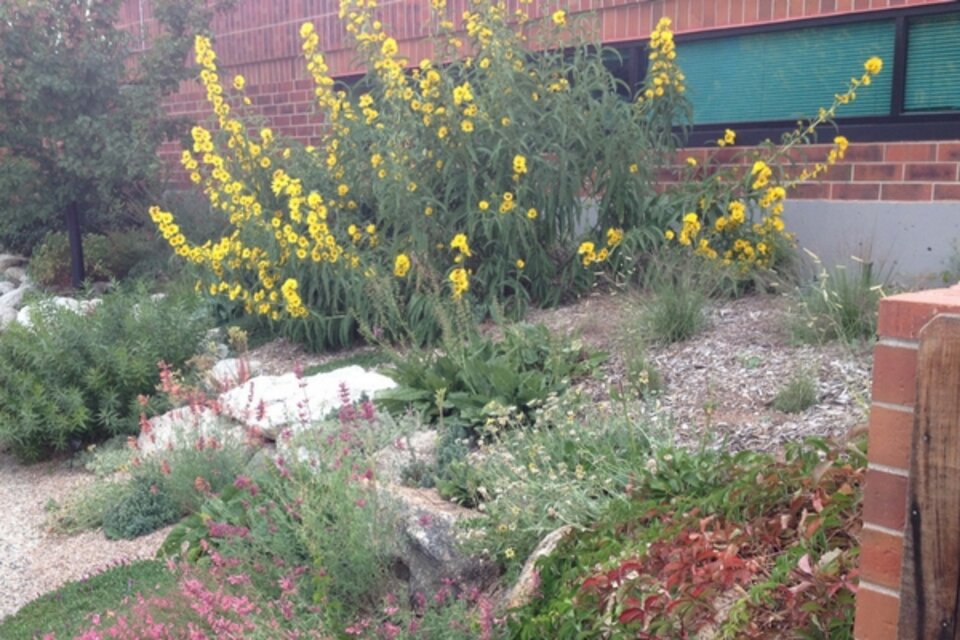Planting for Water Savings

Planting for Water Savings
Spring will be here before we know it, which is very exciting for plant enthusiasts. We can get outside and do some cleanup once it starts to get warm. Don’t get too excited though, winter could still show up for a couple more months. One thing you can do now, though, is plan your garden.
Choose Well-Adapted Plants
When planning your garden, pay close attention to the growing requirements of the plants you choose. Select plants that are suited for your growing zone. Southeast Nebraska is in zone 5B. Also, utilize plants that have similar growing conditions for each area or garden in your landscape. For example, shade plants should be planted with other shade plants and water loving plants should not be planted with drought tolerant plants.
Be Water Wise
Nebraska often sees periods of drought through the hot part of the summer. For water saving options, look to drought tolerant plants. Some good choices for drought tolerant plants include
- Yarrow, Achillea spp.
- Russian sage, Perovskia atriplicifolia
- Coneflower, Echinacea spp.
- Black-eyed Susan, Rudbeckia hirta
- Daylily, Hemerocallis spp.
- Salvia, Salvia spp.
- Viburnums, Viburnum spp.
- Ninebark, Physocarpus opulifolius
- Maidengrass, Miscanthus sinense
- Big Bluestem, Andropogon gerardii
- Little Bluestem, Schizachrium scoparium
These plants will grow well with no supplemental water in normal precipitation. There are also quite a few plants that need very low amounts of supplemental water, which are good choices as well, these include
- Shrub Roses, Rosa spp.
- Penstemon/Beardtongue, Penstemon spp.
- Plumbago/Leadwort, Ceratostigma plumbaginoides
- Coral Bells, Heuchera spp.
- Butterfly Milkweed, Asclepias tuberosa
- Lilies, Lilium spp.
- Phlox, Phlox paniculata
Why does it matter if you use drought tolerant plants? These plants will survive better in our summer environment when it gets very hot and dry. Also, this will help reduce the amount of water we are applying to our landscapes. Water is limited in supply and costly to use. If we minimize the amount of water needed for irrigation, everyone will benefit.
When to Water
Remember, if you are utilizing plants that are more drought tolerant, only water when necessary. Plants will tell you when they need to be watered, they will begin to wilt and show signs of water stress before reaching the permanent wilting point from which they will not recover. Many times, too much water is used in low water-use landscapes due to the tendency of homeowners to overwater.
Take Control of Your Irrigation System
There is also a tendency to overwater with in-ground or automatic sprinkler systems. Many times people use the “set it and forget it” thought process for watering the lawn with an automatic system, but that will actually use more water than what is needed. According to the American Water Works Association Research Foundation, the research from 2000 shows that homes with in-ground sprinkler systems use 35% more water than those without an in-ground sprinkler system. Those who have automatic timers to control those in-ground sprinkler systems use 47% more water than those without timers. It is better to only turn on the sprinkler system when you need to water rather than having it run all season on certain days or times. Also, make sure that you turn the sprinklers off in the rain or just following a rain event, or purchase a water sensor for your landscape to avoid watering when the soil is wet.
Economic Benefits of Landscaping
These statements are not meant to deter people from having a nice landscape. In fact, landscapes can increase the value in your home, reduce crimes, increase the rate of healing at a hospital, provide oxygen, and decrease carbon dioxide in the environment. According to research done by Colorado State University, there are 25% fewer crimes in public housing with landscapes, children who spend time outdoors are better learners, and every $1 invested in a home landscape yields a $1.35 return on the investment.
This article was reviewed by Sarah Browning